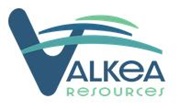Exploration and Diversification
Exploration is very risky as most people will know and only a fraction of all the exploration targets out there will ever become a material discovery. Thus, the people factor is extremely important since the exploration “champions” would not bother with anything other than the cream of the crop. Why? Because the champions of exploration tend to be passionate people that are driven by the idea of making another big discovery and not collecting salaries. These people are not in it for the money (partly because most of them are rich already) but rather in it for professional satisfaction.
Another important factor when it comes to exploration is that it is really a numbers game at the end of the day. Especially the grassroot stuff where there is little de-risking that has been done before rolling the dice. So when it comes to grassroot exploration I strongly prefer to invest in companies with a) Great people involved and b) Multiple targets.
Lets look at a few theoretical examples to prove my point…
First of all lets assume that each of the following companies either have or will have money to test each target and that the investment case is based on an investor sitting put until all targets have been tested
Scenario 1
You own a junior grassroot explorer that has one project and one target. Furthermore the management team is average and the target is average. Lets say there is a 2.5% chance of finding something worth $500 M. The (crude) Expected Value of that company would be 0.025 * $500 M =$12.5 M. No more and no less.
Lastly, the chance of failure is 97.5%
Scenario 2
You own a junior grassroot explorer that has multiple targets (lets say 5 in total). Furthermore the management is tier 1 and the targets are high quality targets. Lets say there is 5% chance of finding something worth $1 B. The (crude) Expected Value for the company would be 5 * 0.05 *$1,000 M = $250 M. No more and no less.
Lastly the chance of failure on all targets is 0.95^5 = 77%
… Now, each of these companies are junior grassroot explorers but the Expected Value is over an order of magnitude apart and the chance of success is 23% vs 2.5%. This is something I think a lot of people don’t really think about since most people seem to invest (speculate) on a single drill campaign anyway. In other words it doesn’t really matter if a company has 5 targets or 1 if a speculator is only in it for any given maiden drill campaign because the target diversification only works in one stays put and sees what will have come up (or not come up) after all targets are drilled.
Bottom Line
There are grassroot explorers and there are grassroot explorers. Even if two companies have the same Enterprise Value the difference in Expected Value might be worlds apart. One might be overvalued at $20 M since it only has one or few decent targets and decent people invovled. Another might be extremely undervalued because it has multiple high quality targets and superb people involved. The tendency to think that one is comparing apples to apples akin to “Well both are grassroot explorers and company X is cheaper than Y so it’s probably the better buy!” ,while it really might be a case of comparing a (rotten ) apple to an orange, will often lead to faulty conclusions.
Never underestimate the Expected Value in an explorer with a) Great people, b) Multiple projects/targets and c) High quality targets. These companies are often worth multiples of your typical grassroot explorer while often not being valued much higher.
Real Life Example
One of my favorite grassroot exploration stocks is Inflection Resources. It has perhaps the most impressive Technical Team I have ever seen in a junior explorer and the company started off with 20 conceptual targets within their enormous New South Wales project. The company was set up to explore for tier 1 copper/gold targets like the giants in area that are worth billions (Cadia, Cowal & Northparkes etc). So far the company has scout drilled sixout of the 20 targets and the early results from two of these targets looks highly encouraging.
Now, given that these conceptual targets are in the $1+ B category and they have found smoke at two out of six targets so far, one can start to consider the Expected Value which might be present at this point in time…
Lets say the two targets that show highly encouraging signs have a 10% chance of being worth $1 B (Cadia was worth over $6 B in 2016 according to Credit Suisse for reference and is the largest gold mine in Australia today). The Expected Value of each target would then be $100 M. Again, this team is world class and made up of a bunch of ex senior BHP people who knows what they are doing. Even if the chance of success is only 5% the Expected Value would be $50 M per target. Furthermore, there are 12 targets left to be drilled so if the current “hit rate” is a guide then there might be [12/3 = 4] additional targets that end up as “highly encouraging” after they have all seen scout drilling. In this theoretical scenario one could say that there will be a total of six targets out of 20 that will be labeled “highly encouraging”. If we then assume that the chance of success is 5% per target and the value of success would be $1 B at the end of the day then one could argue that Inflection Resources could have an Expected Value of 6 * 0.05 * $1,000 M = $300 M today…
In my opinion I think Inflection Resources could probably JV their projects out to BHP or Rio Tinto in a deal with a very high implied value… If they wanted to. With that said the company has chosen not to play it “safe” and is instead set on actually testing all 20 targets themselves. On that note I would point out that Management and Insiders own 38.12% of the company and the Australian Technical team owns 4.50% which begs the question: What kinds of Expected Value for the company do these guys have in the back of their heads in order to NOT play it safe and just JV/option it all out like the majority of juniors would do (especially when management got a lot of money at risk personally)?
In my opinion the market has no effing clue about Expected Value as per usual and I find the current Enterprise Value of Inflection Resources to be totally, out of the world bonkers at US$ 14 M (US$18 M in MCAP). I say this because this valuation would imply a chance of success of finding “even” a $500 M deposit to be around 0.23% in per target (the two “highly encouraging” targets + the 14 targets that are left to be drilled/reported on). Does anyone really think that the most impressive exploration team I have ever seen in a junior would get out of bed if they believed that was even remotely true? I think not. And I think that Management, Insiders and The Australian Technical Team would have done a deal long ago given the amount of skin in the game they carry if they thought those kinds of odds were even remotely true.
Bottom Line
Inflection Resources started out with 20 conceptual $1+ B targets and six of them have been tested so far:
Alistair Waddell, Inflection’s President and CEO, states “We are very happy to have discovered a second zone of alteration which suggests we could be in the vicinity of a second porphyry centre. We are currently planning a series of follow-up, step-out holes at Trangie while continuing our first-pass, systematic program across the greater portfolio of targets in northern New South Wales. Once the permits for the additional drill platforms have been received, we will aggressively execute a series of step-out holes designed to vector into potential porphyry centres at both Trangie and Myallmundi.” – Source
- How many juniors started out with 20 targets that were delineated by a group of ex BHP people?
- How many are explicitly going after true tier 1# targets in a tier #1 jurisdiction?
- How many have hit hit something that “suggests we could be in the vicinity of a second porphyry centre.”?
- How many have 14 targets left to explore (on top of all their other targets in Queensland and southern New South Wales)?
… I haven’t found a single junior explorer that fits this description.
And given all that I have stated above anyone can buy this company with an Enterprise Value of US$14 M today. I don’t have words to describe how brain dead this sector can be at times. This company should already be trading 300% higher than where it is, easy. I chalk this irrationality up to the typical human investing mistake of confusing risk and uncertainty as I recently talked about in THIS article. Needless to say I have bought a lot of shares of Inflection Resources and was more than happy to have them on as a banner sponsor because I think this is one of the biggest grassroot exploration no brainers on a risk/reward basis given the abysmal valuation and quality/quantity of targets in a tier #1 mining jurisdiction.
The Key Points For Why I Think The Risk/Reward is Ridiculous at an Enterprise Value of US$14 M:
- Beyond world class people involved
- World class jurisdiction
- Only testing targets they think have tier #1 potential
- Over 10 targets left to test
- Two targets with smoke already confirmed
- Giant mines in the neighborhood
Closing Thoughts
I don’t want to hear anything about the juniors sector being hard. If you figure out the most common mistakes people do then you will start seeing some real bargains all of a sudden. There are never any guarantees only risk/reward and in my opinion Inflection Resources is one of the most grossly mispriced exploration stories out there.
Note: This is not investment or trading advice. I own a lot of shares of Inflection Resources which I have bought in the open market. The company is also a banner sponsor. Assume I am biased and make up your own opinion about everything.





























As a stats teacher, I appreciate how Erik uses probabilities and expected values (like the good poker player he is) as one of his tools to analyze resource companies. Good job on Inflection.
Another great exposition on the reasoning behind one of Erik’s picks. Management is so important. I already own some and may put in a bid for some more. I have a bid on another similar story, using the exact same reasoning. Great management with a proven track record and multiple exciting properties but with double the market cap but also more preliminary work. Just comparing the two points out to me just how cheap AUCU really is.
Philip, what is the similar story? Thanks.
THANK YOU,THANK YOU,THANK YOU!